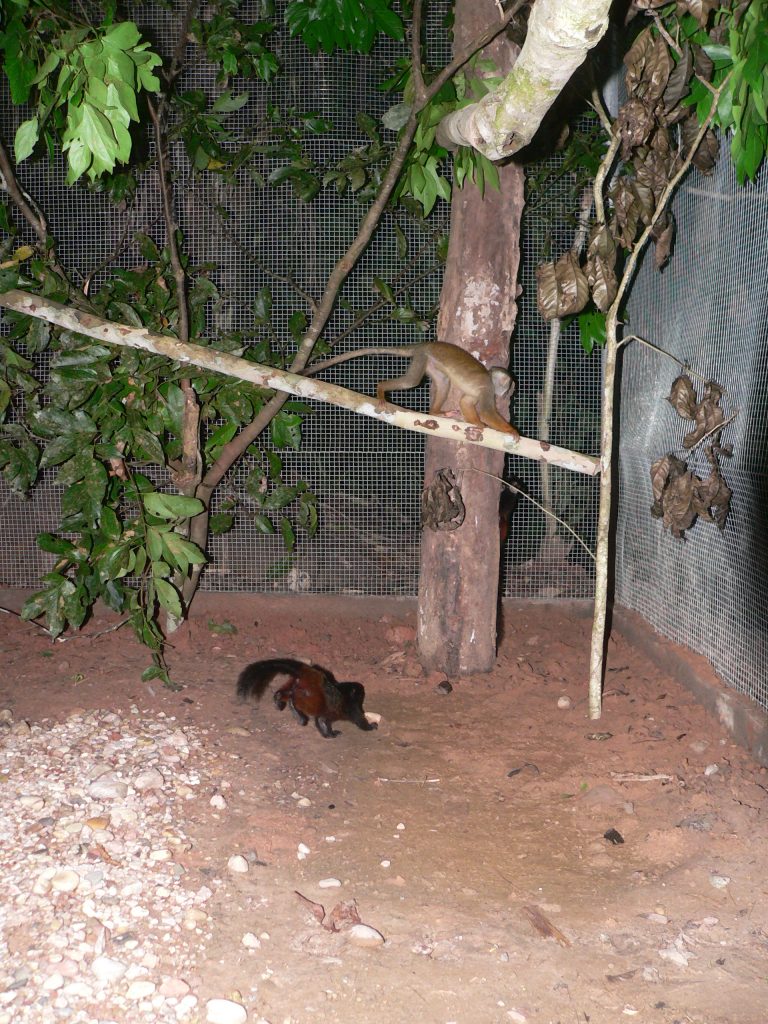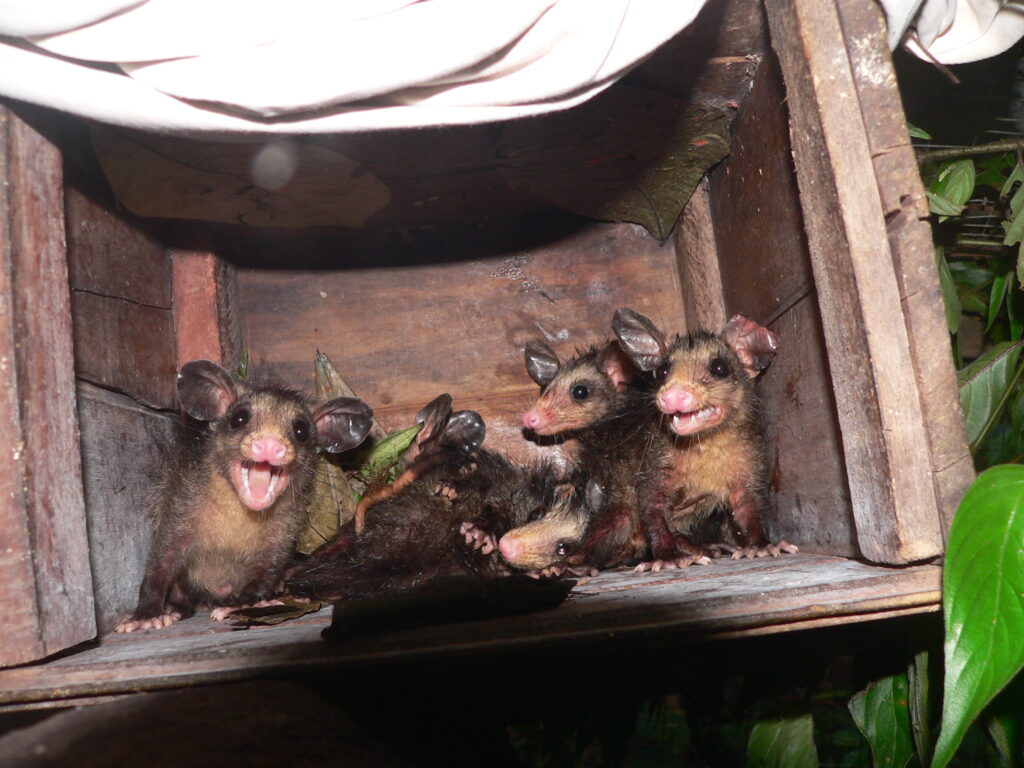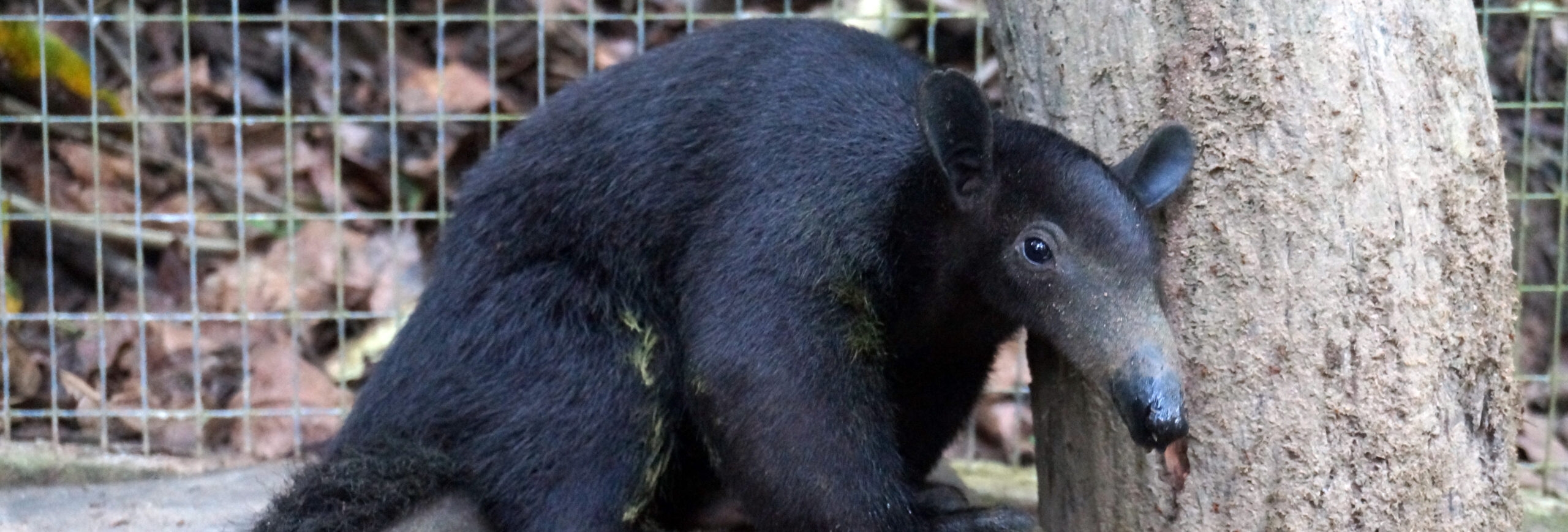The fun never stops here at Esperanza Verde! Since their previous visit, the Ministry of Pucallpa has returned twice, this time with a new batch of reptiles, birds, and monkeys.
As wet season approaches and the mosquito population rises, an increasing number of monkeys have been spotted with botflies, which lay their eggs under the skin of animals via mosquito bites. We have begun preventative treatment with several of our monkeys, and are keeping a sharp eye out for any monkeys already in need of botfly removal.
.
Monkeys
Cinty & Mica (females capuchin)
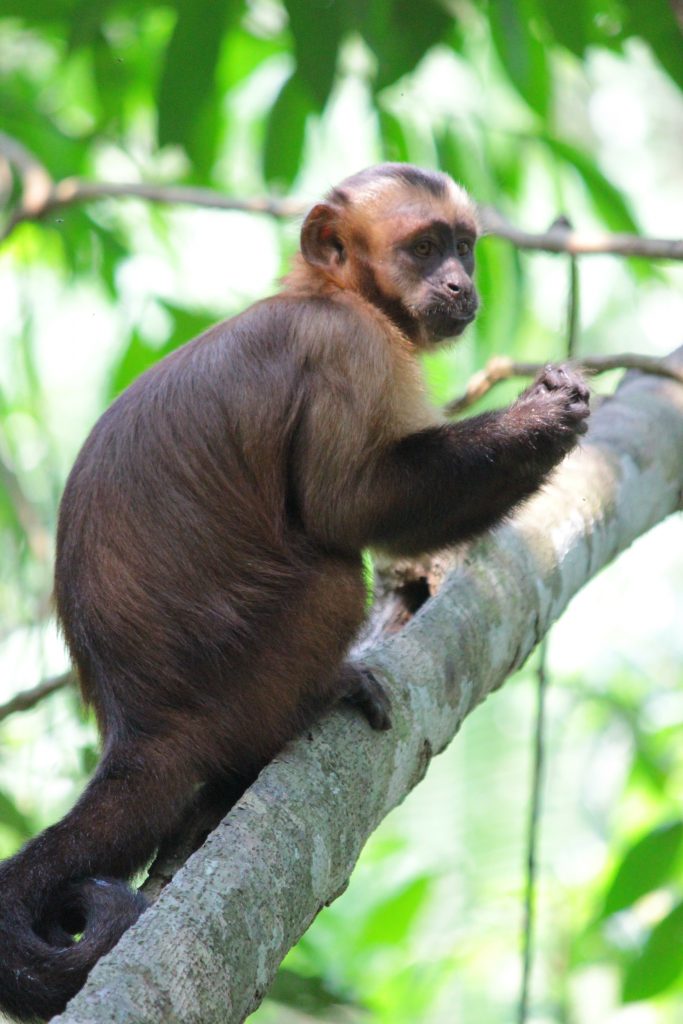
was recently chipped, and treated for botflies along with Mica, another capuchin. While it´s still too early to tell, Mica has not been given any medication as a precautionary measure because… wait for it… she might be pregnant! Stay tuned for further updates on this exciting development !
Wallace (male howler monkey)
was also chipped, and had quite a few botflies removed. Wallace has been a bit slow this month, was often spotted alone, and was occasionally in need of hand-feeding by the volunteers. While this is sadly not uncommon, as howler monkeys are difficult to maintain under human care, Wallace has been doing surprisingly well and we continue to be optimistic. He has been eating daily, socializing more with the other baby monkeys, and is gradually being weaned off human contact in order to develop more independence.
.
Birds
Sheena (tropical screech owl)
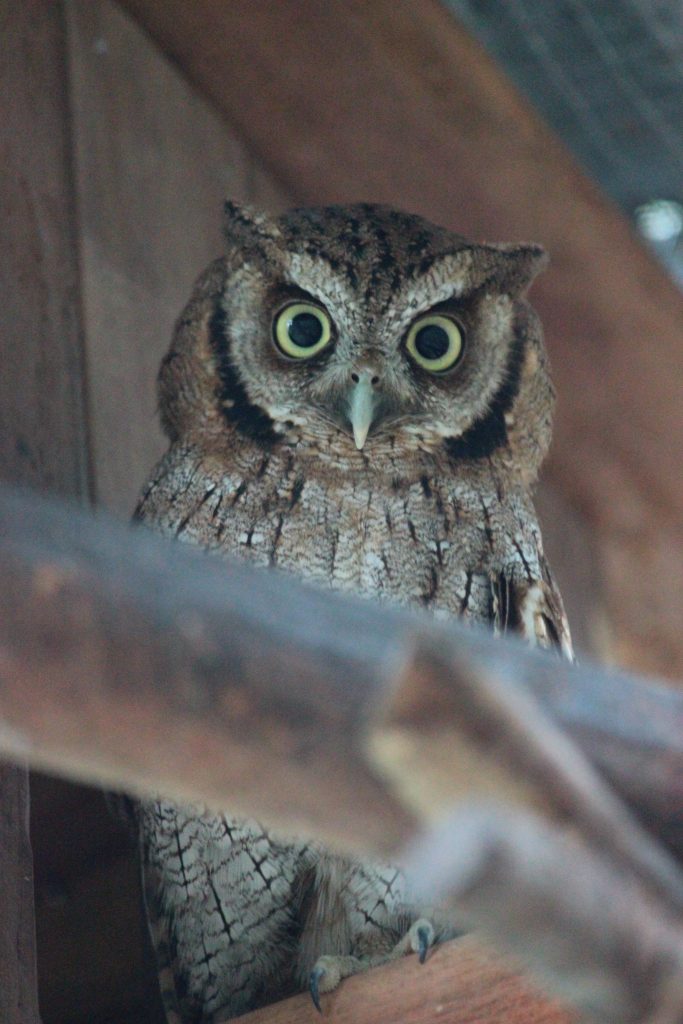
has been released after weeks of training of cricket catching and careful attention from both Douwe and the volunteers. We decided to give it a go, and on the first day of release she was still seen, although did not come to get fed. We hope she learned enough to survive while being with us!
.
Other Mammals
Lulu (female two-toed sloth)
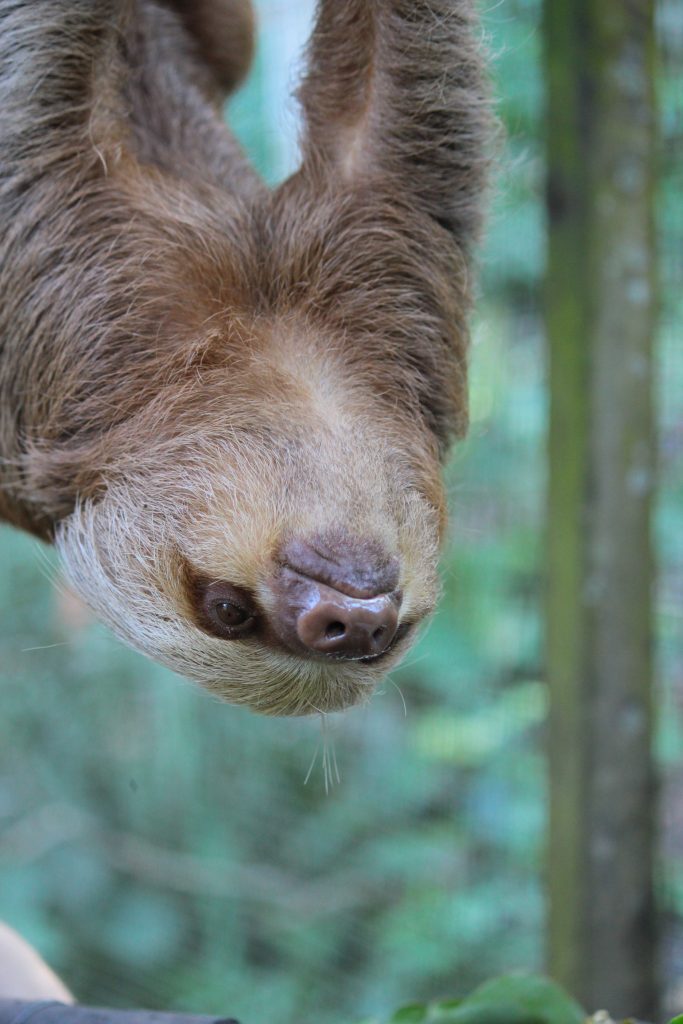
has once again returned to her cage after losing a bit of weight since her previous release. She remains active, and our volunteers are monitoring her diet to ensure that she eats a healthy amount of leaves upon her next release. We are now teaching her to eat more wild leaves, by means of steaming some of them. She seems to do well on this, so we will soon try to release her again.
Tamana,
our previously released female tamandua, has been seen roaming the grounds at night more frequently, and appears to be happy and healthy!
.
SUST Animal Orphan Hospital
In the last months the clinic has been very full, and it generally takes two persons to care for all the animals.
New arrivals
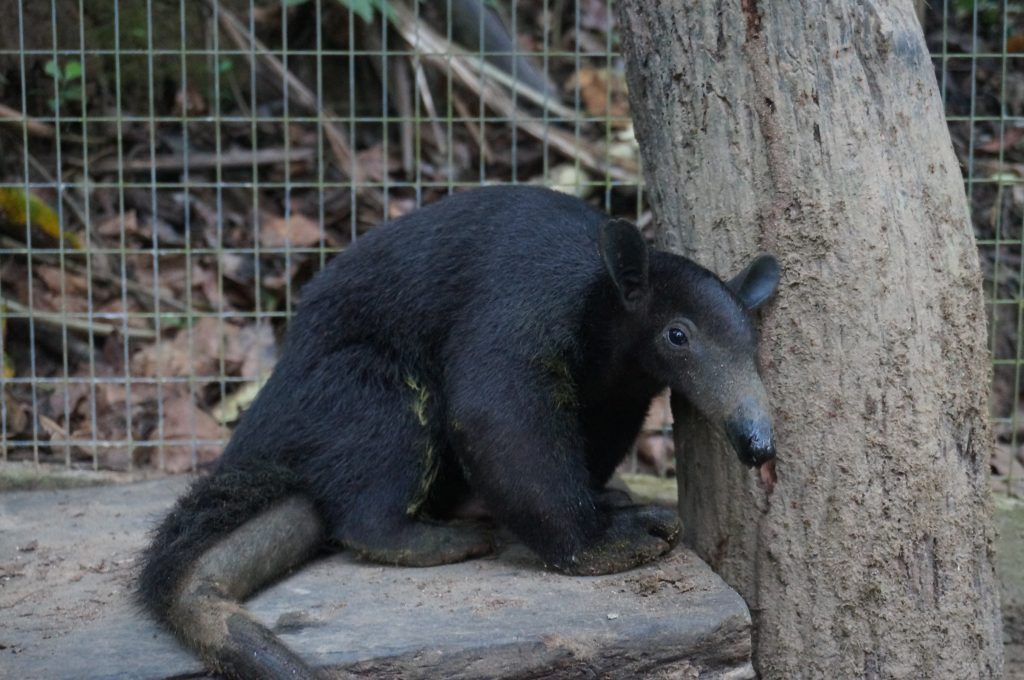
The first new arrival, and also our quickest release of the bunch, was a male tamandua, a species of anteater. He arrived healthy and un-injured, and since their diet of termites and ants can be difficult to accommodate, he was released the same night and has yet to return, which we believe is a good sign that he is thriving in the wild.
Neo, a yellow-winged Amazon,
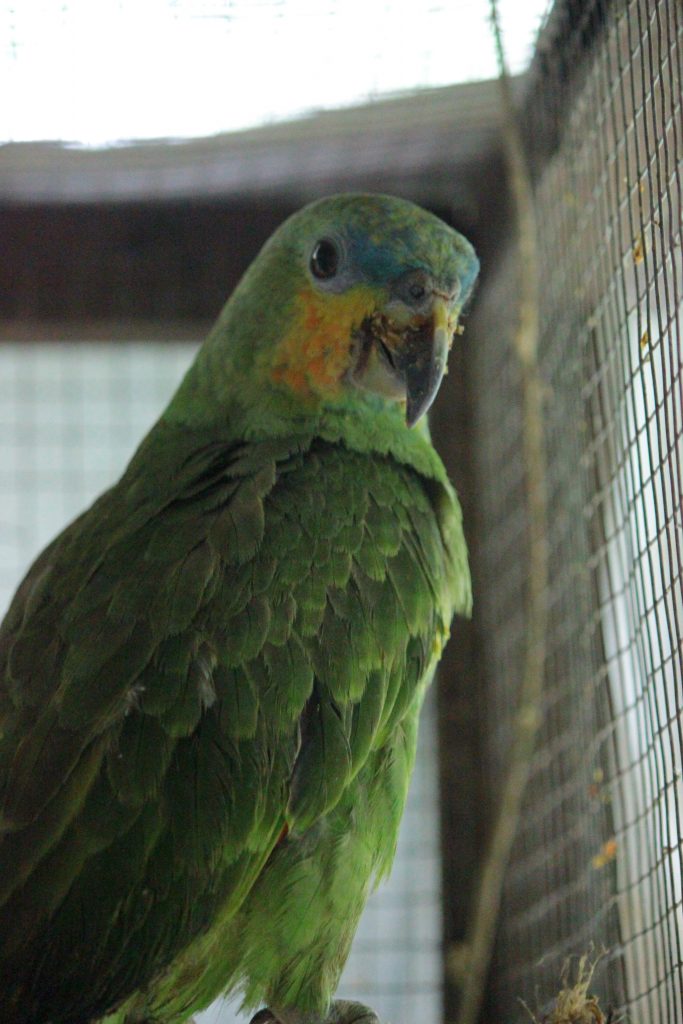
arrived with two missing toes and clipped wings. All things considered, he remains in good spirits, is eating daily, and will remain in the clinic for the time being.
Kaya, a baby female howler monkey,
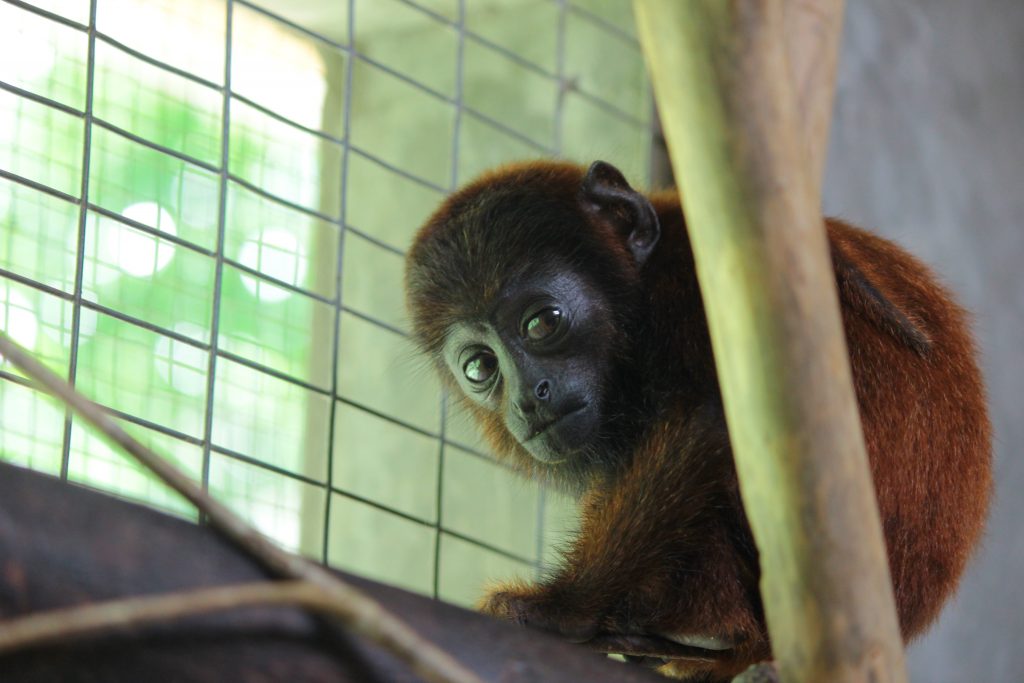
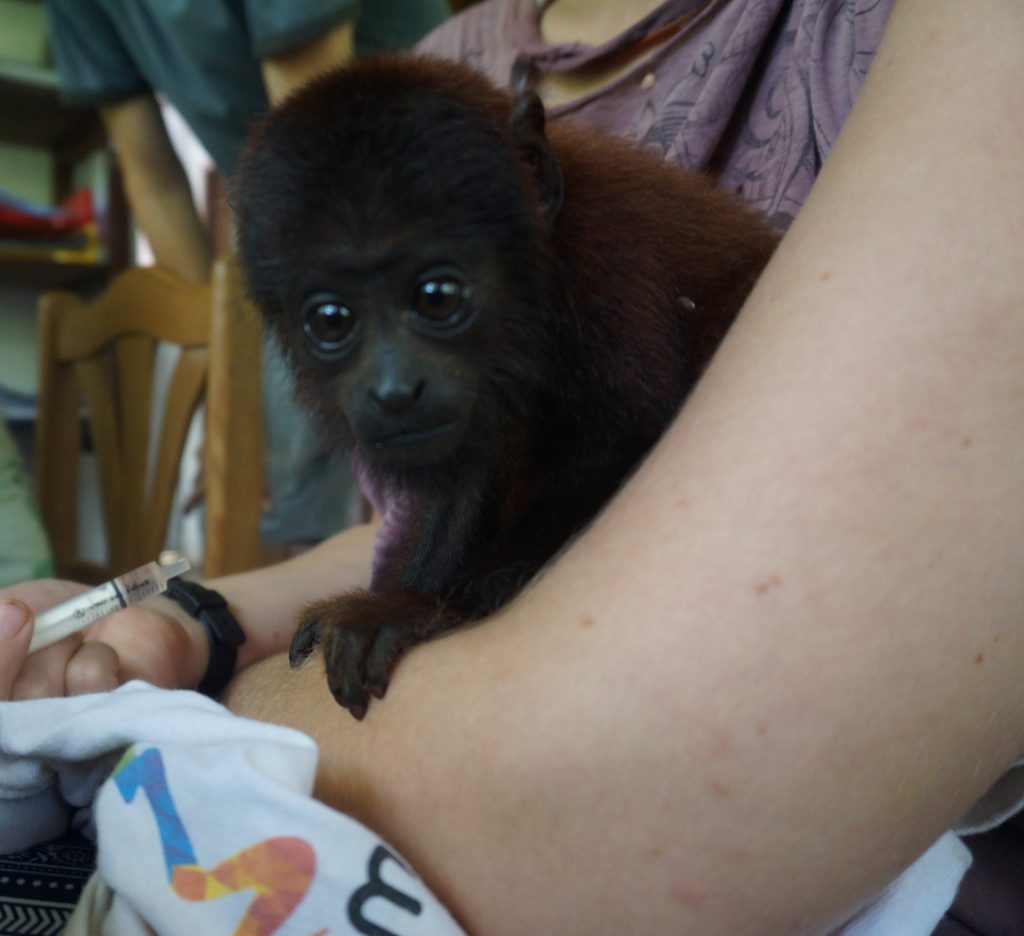
is currently under the careful watch of Olivia, Douwe, and Claire, our head volunteer. After having diarrhea for a couple of days, she is being fed a special diet and we are routinely checking for parasites, as we do with most of our new arrivals.
Cesar, a young male howler monkey,
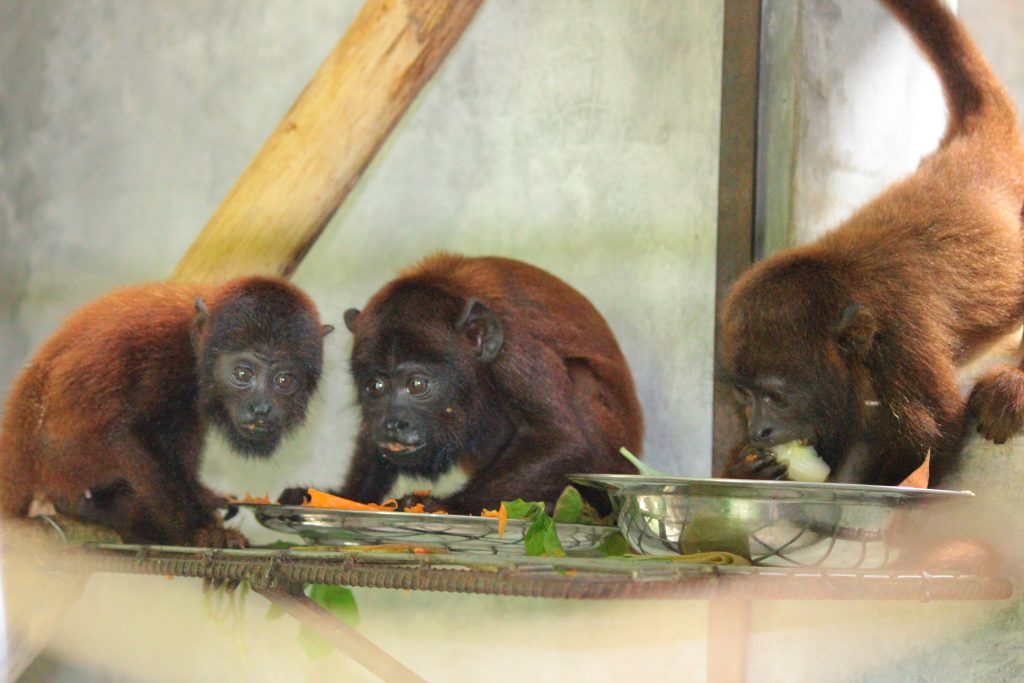
was brought by private persons, after having been a pet for several months. As the neighbors were treating him badly, the owner decided to bring him to us.
Cesar is now the fourth howler monkey in our care, along with Kaya, and Darwin, a relatively new arrival who still remains in the clinic, and Wallace, one of our younger monkeys roaming free on the grounds. We eagerly hope to one day introduce our howler monkeys to each other, as they are a social species that often shows signs of depression under human care, especially when alone. While this will no doubt be a lengthy and challenging process, we remain optimistic and will keep you updated on any further developments!
Then we had another arrival, a young female brown capuchin, Kurima.
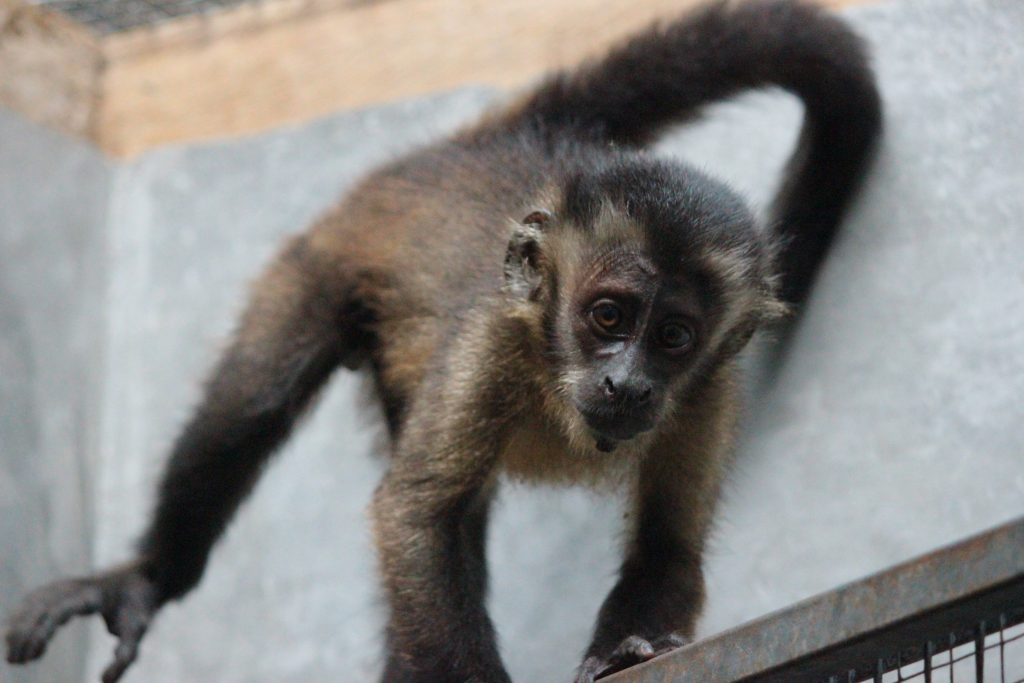
She was bought in Curimana by a man who met Olivia during the weekly shopping. They talked and he decided to hand the monkey over. We hope he will not buy an animal again. People think often they are doing well by buying an animal from the animal trade, saving it’s life. But while saving this animal it means the hunter just received more motivation (as people are paying) to go back into the jungle to hunt more. This often means, in case of e.g. a monkey, that a mother will be killed to get to the baby.
Wolfgang and Vivil are Esperanza Verde´s newest reptile inhabitants!
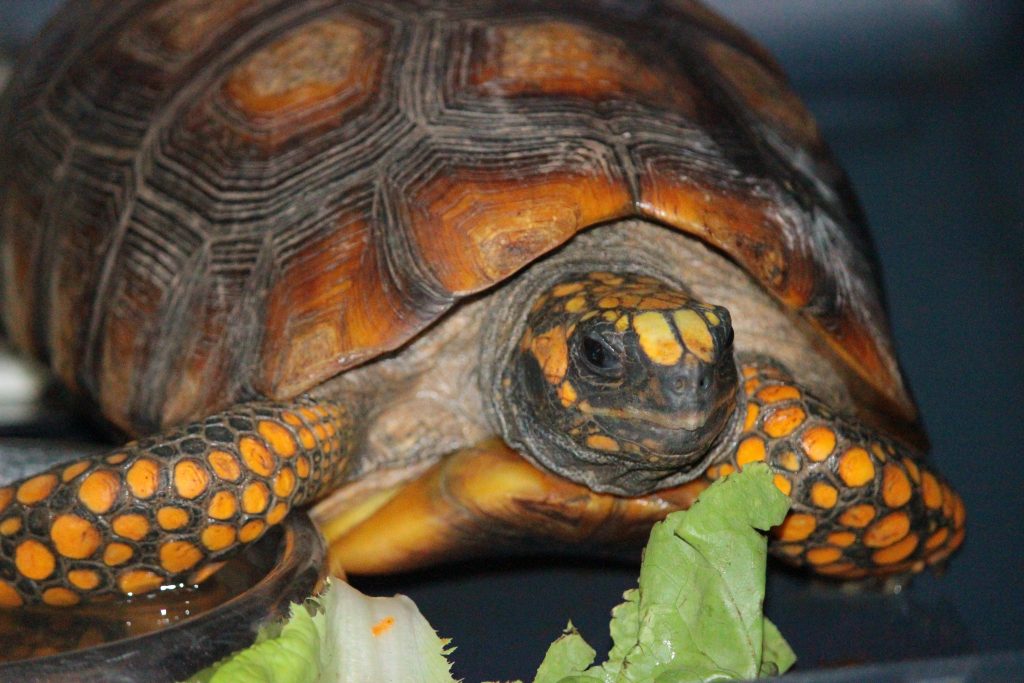
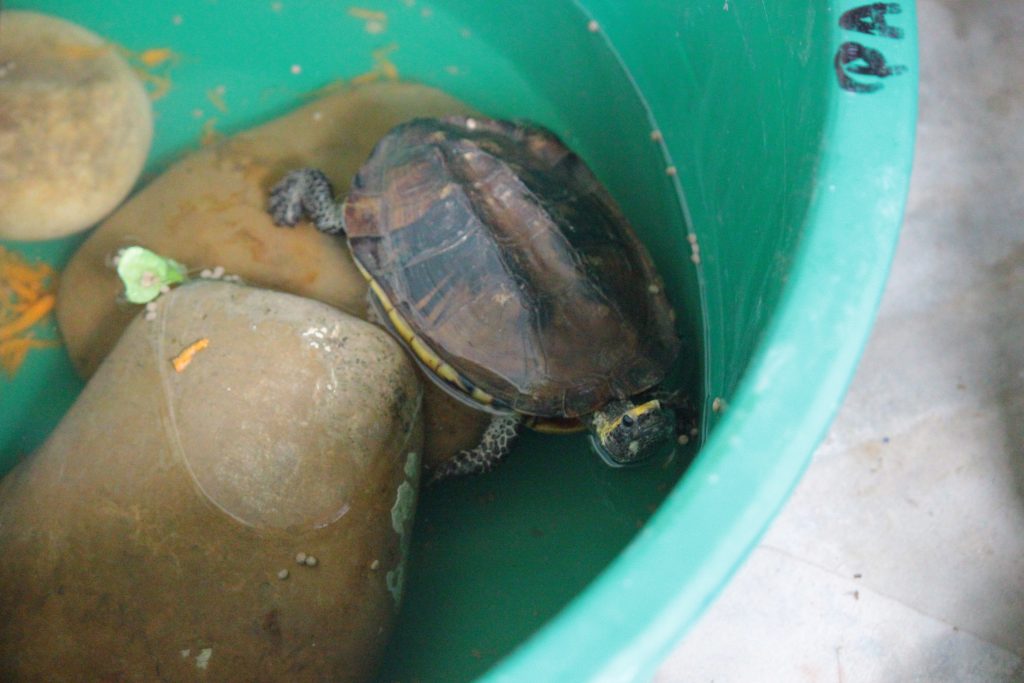
A twist-neck turtle and yellow-footed tortoise respectively, they arrived relatively unharmed, with the exception of a hole in the back of Vivil´s shell, presumably drilled by traders for the purpose of tying up the animal. The quarantine period for reptiles usually lasts a minimum of three months, so they will remain in the clinic until it is safe to add them to our reptile enclosure.
The last of our new arrivals are Cumala, a female spider monkey, and Camu, an infant male spider monkey.
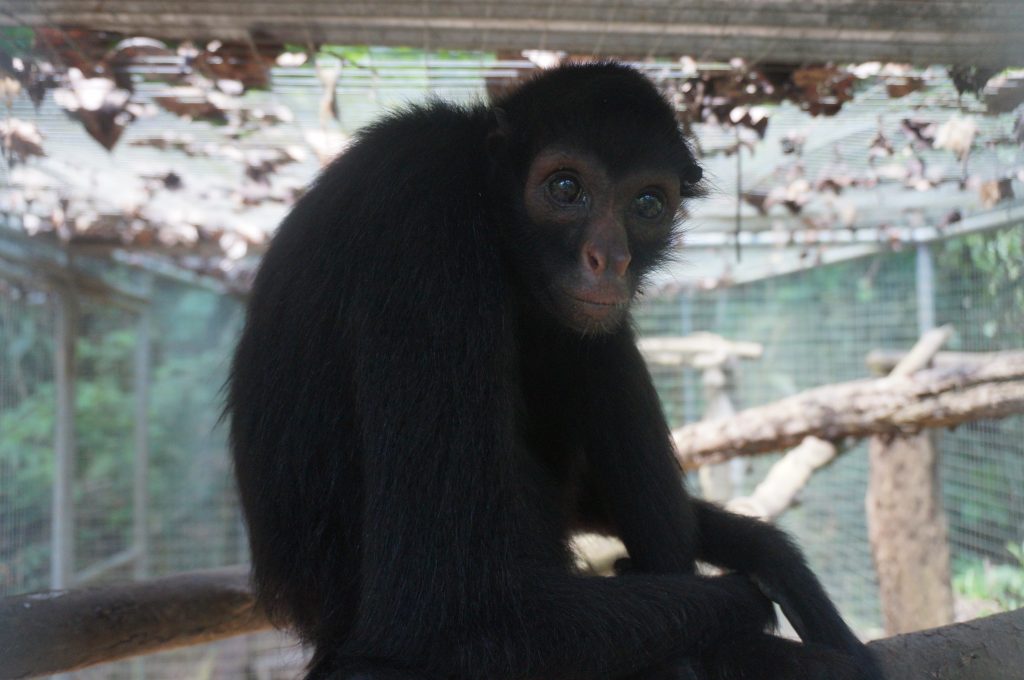
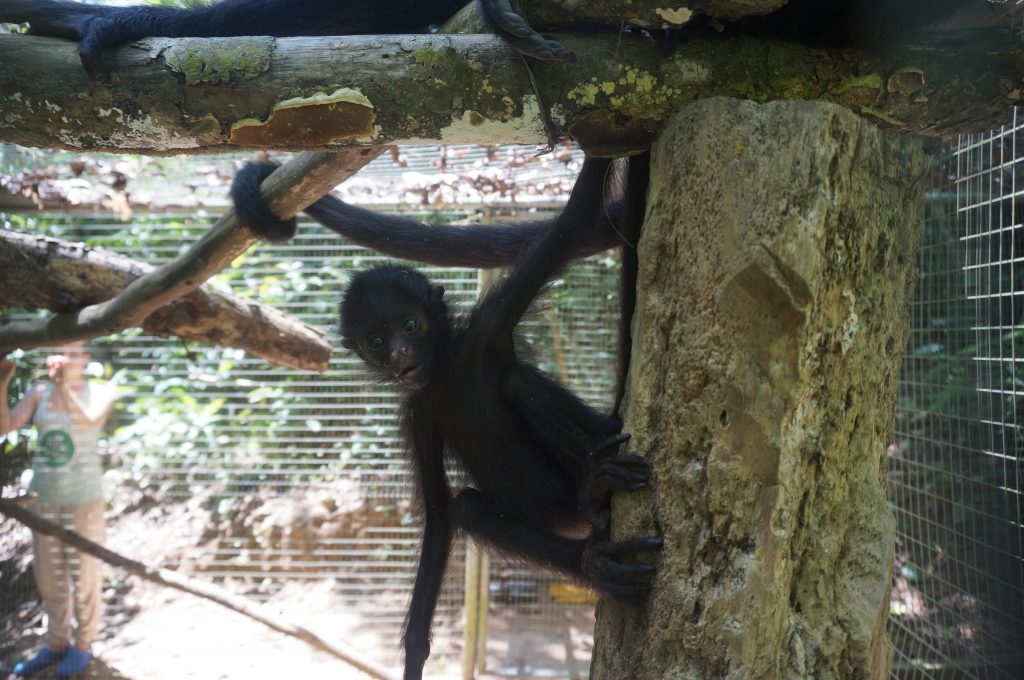
They were roaming outside near the zoo of Pucallpa, most likely escaped and there was no effort taken to recapture them. The ministry finally got the change, as they most have been getting hungry, and caught them. They are both being held in the same enclosure, and we were told that Cumala is the infant´s mother. At first we doubted a bit whether Cumala was really Camu’s mother, as they she seemed to shove him off very frequently. But at some point we saw Camu drink with her and she does take him on her back from time to time. Both of them are skinny, but are eating twice daily and have shown an active curiosity in our volunteers. With any luck, we can eventually introduce Cumala to our other female spider monkey, Yanay, who is currently the only one of her species living released here at EV.
Churi (many-banded aracari),
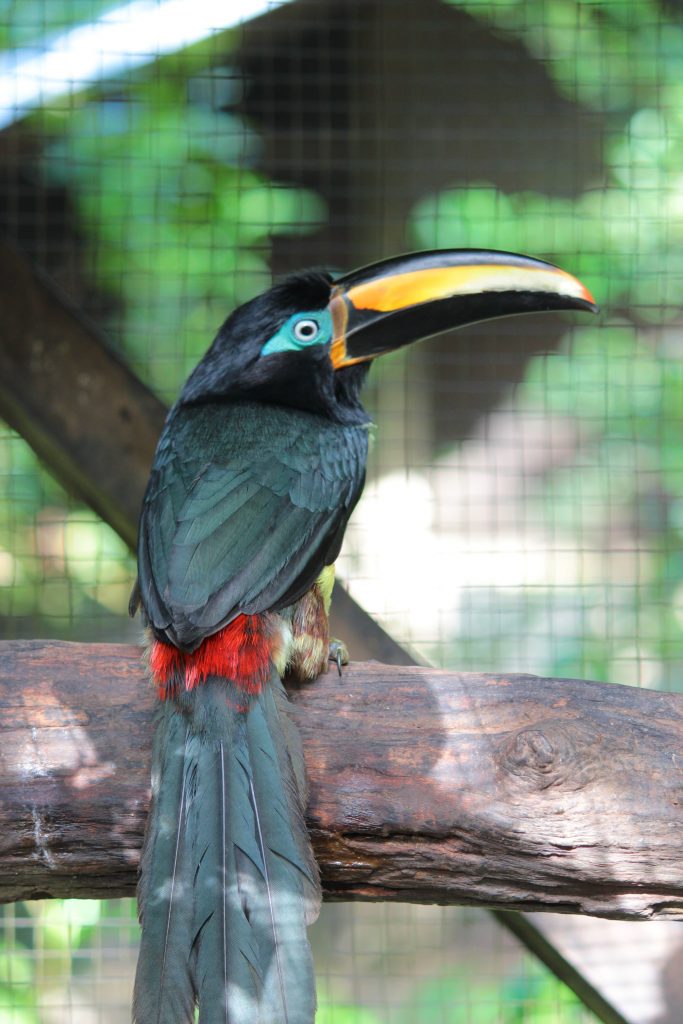
one of the favorite animals of many volunteers, has unfortunately developed a problem in his feet. He lost his grip on branches and seems to be in pain when trying to bend the toes. We are still not sure what caused this lameness/stiffness of all his toes, but are in contact with several veterinarians to find the best treatment. For now we placed him in the clinic to control his diet, as well for treatment and close observation.
Balou, the common potoo,
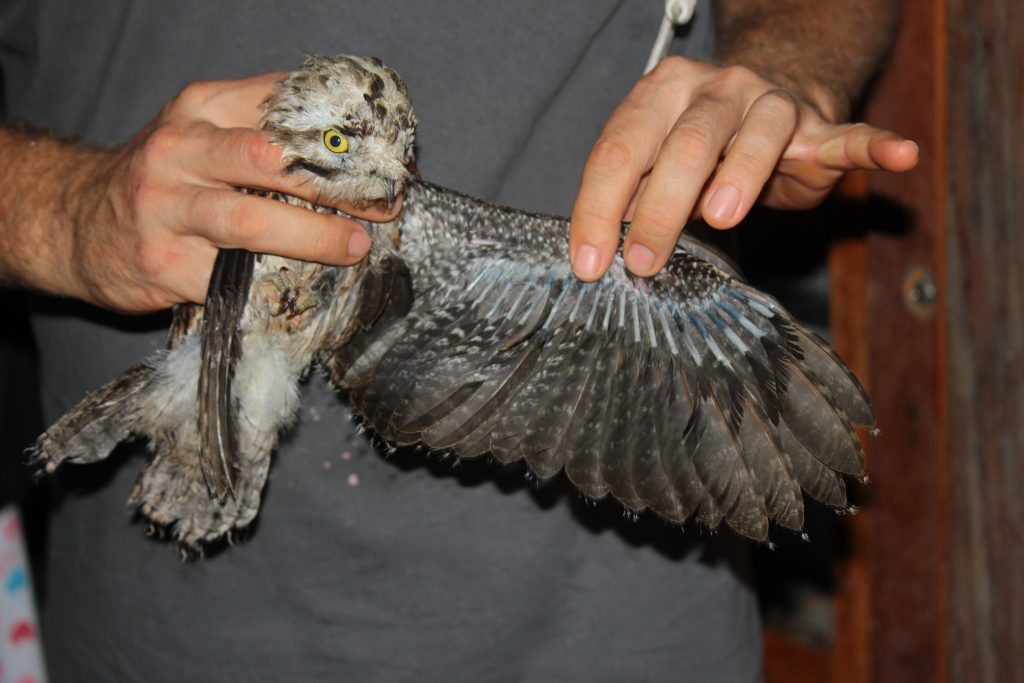
was injured on a routine weigh check. She broke her wing severely. We could fix the break and the wound looked good, but she died after 2 days, it was too much stress and strain on her body.
